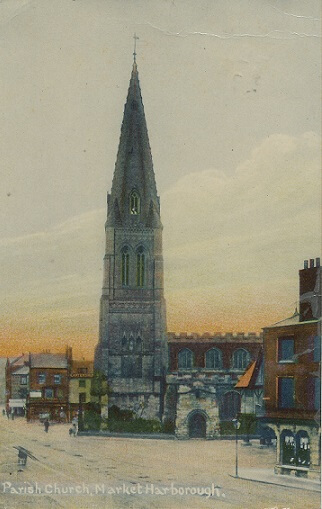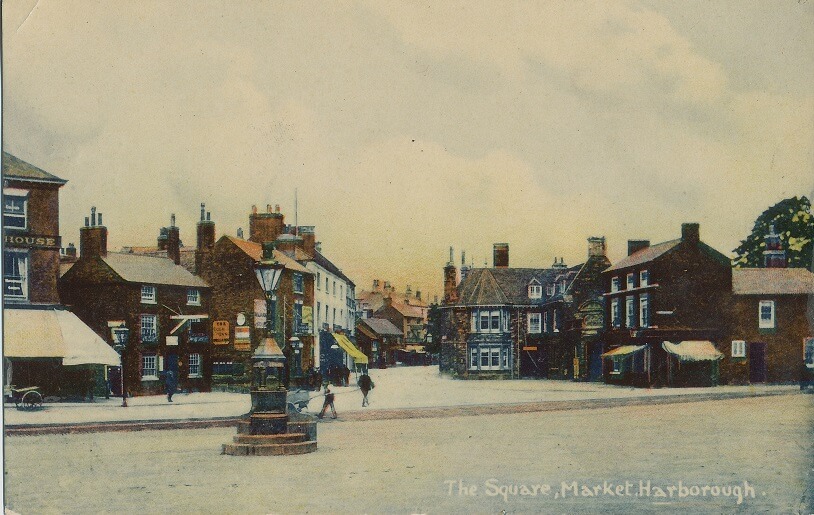
Market Harborough was a ‘new’ town created in the 12th century and lies about halfway between Leicester and Northampton. According to Nicholls, Market Harborough was first mentioned in 1170; it was mentioned again in a Pipe Roll of 1199 relating to a payment from the manors of “Buggeden and haug”. The town had a main road running through it (the High Street) with ‘tofts and crofts’. Toft was a piece of land which fronted the town street where the dwelling was erected and the croft was land to the rear where an outhouse was or crops were grown. Many of these can be seen in some form today by the long yards which run off the High Street.
“It (St Dionysius) is said to have been built by John of Gaunt, in penance enjoined him by the Pope, for his illicit connection with Catherine Swynford, before she became his third wife. It was dedicated by its founder to St Dionysius, the Aeropagite. The building is decorated with the arms of John of Gaunt and those of Blanche, his first wife…” William Harrod in his History of Market Harborough, describes John of Gaunt’s affair with Katherine as “an illicit conversation”

In the 18th century Market Harborough became a staging post and had many prosperous coaching inns to accommodate travellers. The Three Swans and the Angel are amongst the oldest of Harborough’s inns and can still be found on the High Street today with the northern end of the town still having many Georgian fronted buildings. The amount of inns and their prosperity were dramatically reduced when the railway arrived.